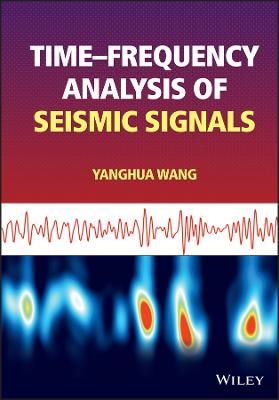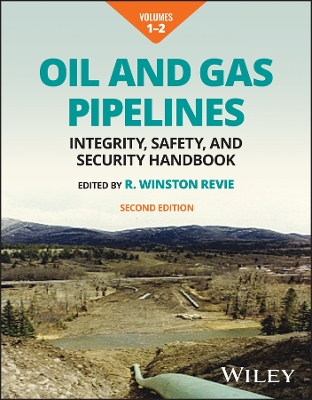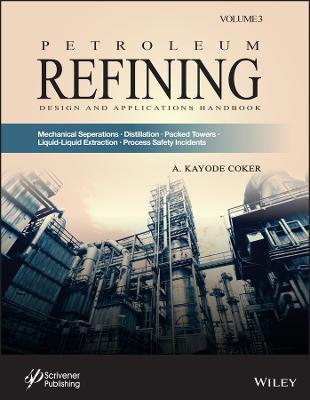Time-frequency Analysis of Seismic Signals
 -15%
portes grátis
-15%
portes grátis
Time-frequency Analysis of Seismic Signals
Wang, Yanghua
John Wiley & Sons Inc
10/2022
240
Dura
Inglês
9781119892342
15 a 20 dias
Descrição não disponível.
Preface viii
1 Nonstationary signals and spectral properties 1
1.1 Stationary signals 1
1.2 Nonstationary signals 5
1.3 The Fourier transform and the average properties 7
1.4 The analytic signal and the instantaneous properties 10
1.5 Computation of the instantaneous frequency 13
1.6 Two groups of time-frequency analysis methods 17
2 The Gabor transform 19
2.1 Short-time Fourier transform 19
2.2 The Gabor transform 23
2.3 The cosine function windows 26
2.4 Spectral leakage 31
2.5 The Gabor limit of time-frequency resolution 33
2.6 Implementation of the Gabor transform 36
2.7 The inverse Gabor transform 40
2.8 Application in inverse Q Filtering 42
3 The continuous wavelet transform 47
3.1 Basics of the continuous wavelet transform 47
3.2 The complex Morlet wavelet 51
3.3 The Morse wavelet 54
3.4 The generalised seismic wavelet 58
3.5 The frequency representation 62
3.6 The inverse wavelet transform 64
3.7 Implementation of the continuous wavelet transform 66
3.8 Hydrocarbon reservoir characterisation 68
4 The S transform 73
4.1 Basics of the S transform 74
4.2 The generalised S transform 77
Time-Frequency vi Analysis of Seismic Signals
4.3 The fractional Fourier transform 79
4.4 The fractional S transform 83
4.5 Implementation of the S transform 86
4.6 The inverse S transform 88
4.7 Application to clastic and carbonate reservoirs 93
5 The W transform 95
5.1 Basics of the W transform 95
5.2 The generalised W transform 99
5.3 Implementation of nonstationary convolution 106
5.4 The inverse W transform 108
5.5 Application to detect hydrocarbon reservoirs 109
5.6 Application to detect karst voids 112
6 The Wigner-Ville distribution 117
6.1 Basics of the Wigner-Ville distribution (WVD) 117
6.2 Defining the WVD with the analytic signal 120
6.3 Properties of the WVD 123
6.4 The smoothed WVD 126
6.5 The generalised class of time-frequency representations 132
6.6 The ambiguity function and the generalised WVD 134
6.7 Implementation of the standard and smoothed WVDs 140
6.8 Implementation of the ambiguity function and the
generalised WVD 147
7 Matching pursuit 151
7.1 Basics of matching pursuit 151
7.2 Three-stage matching pursuit 153
7.3 Matching pursuit with the Morlet wavelet 157
7.4 The sigma filter 159
7.5 Multichannel matching pursuit 163
7.6 Structure-adaptive matching pursuit 168
7.7 Three applications 170
8 Local power spectra with multiple windows 175
8.1 Multiple orthogonal windows 176
8.2 Multiple windows defined by the prolate spheroidal
wave functions 178
8.3 Multiple windows constructed by solving a discretised
eigenvalue problem 180
8.4 Multiple windows constructed by Gaussian functions 184
8.5 The Gabor transform with multiple windows 187
8.6 The WVD with multiple windows 190
Contents vii
Appendices 195
A The Gaussian integrals, the Gamma function, and the
Gauss error functions 195
B The Fourier transform of the tapered boxcar window,
the truncated Gaussian window, and the Blackman
window 198
C The generalised seismic wavelet 201
D The fractional Fourier transform 203
E Marginal conditions and the analytic signal in the WVD
definition 204
F Prolate spheroidal wave functions and the associated
Legendre polynomials 209
References 215
Author index 223
Subject index 225
1 Nonstationary signals and spectral properties 1
1.1 Stationary signals 1
1.2 Nonstationary signals 5
1.3 The Fourier transform and the average properties 7
1.4 The analytic signal and the instantaneous properties 10
1.5 Computation of the instantaneous frequency 13
1.6 Two groups of time-frequency analysis methods 17
2 The Gabor transform 19
2.1 Short-time Fourier transform 19
2.2 The Gabor transform 23
2.3 The cosine function windows 26
2.4 Spectral leakage 31
2.5 The Gabor limit of time-frequency resolution 33
2.6 Implementation of the Gabor transform 36
2.7 The inverse Gabor transform 40
2.8 Application in inverse Q Filtering 42
3 The continuous wavelet transform 47
3.1 Basics of the continuous wavelet transform 47
3.2 The complex Morlet wavelet 51
3.3 The Morse wavelet 54
3.4 The generalised seismic wavelet 58
3.5 The frequency representation 62
3.6 The inverse wavelet transform 64
3.7 Implementation of the continuous wavelet transform 66
3.8 Hydrocarbon reservoir characterisation 68
4 The S transform 73
4.1 Basics of the S transform 74
4.2 The generalised S transform 77
Time-Frequency vi Analysis of Seismic Signals
4.3 The fractional Fourier transform 79
4.4 The fractional S transform 83
4.5 Implementation of the S transform 86
4.6 The inverse S transform 88
4.7 Application to clastic and carbonate reservoirs 93
5 The W transform 95
5.1 Basics of the W transform 95
5.2 The generalised W transform 99
5.3 Implementation of nonstationary convolution 106
5.4 The inverse W transform 108
5.5 Application to detect hydrocarbon reservoirs 109
5.6 Application to detect karst voids 112
6 The Wigner-Ville distribution 117
6.1 Basics of the Wigner-Ville distribution (WVD) 117
6.2 Defining the WVD with the analytic signal 120
6.3 Properties of the WVD 123
6.4 The smoothed WVD 126
6.5 The generalised class of time-frequency representations 132
6.6 The ambiguity function and the generalised WVD 134
6.7 Implementation of the standard and smoothed WVDs 140
6.8 Implementation of the ambiguity function and the
generalised WVD 147
7 Matching pursuit 151
7.1 Basics of matching pursuit 151
7.2 Three-stage matching pursuit 153
7.3 Matching pursuit with the Morlet wavelet 157
7.4 The sigma filter 159
7.5 Multichannel matching pursuit 163
7.6 Structure-adaptive matching pursuit 168
7.7 Three applications 170
8 Local power spectra with multiple windows 175
8.1 Multiple orthogonal windows 176
8.2 Multiple windows defined by the prolate spheroidal
wave functions 178
8.3 Multiple windows constructed by solving a discretised
eigenvalue problem 180
8.4 Multiple windows constructed by Gaussian functions 184
8.5 The Gabor transform with multiple windows 187
8.6 The WVD with multiple windows 190
Contents vii
Appendices 195
A The Gaussian integrals, the Gamma function, and the
Gauss error functions 195
B The Fourier transform of the tapered boxcar window,
the truncated Gaussian window, and the Blackman
window 198
C The generalised seismic wavelet 201
D The fractional Fourier transform 203
E Marginal conditions and the analytic signal in the WVD
definition 204
F Prolate spheroidal wave functions and the associated
Legendre polynomials 209
References 215
Author index 223
Subject index 225
Este título pertence ao(s) assunto(s) indicados(s). Para ver outros títulos clique no assunto desejado.
Seismic signal analysis; time-frequency seismic signal analysis; nonstationary signals; hydrocarbon reservoir characterization; time--frequency analysis theory; time-frequency analysis mathematics; Gabor transform-type; energy density distribution
Preface viii
1 Nonstationary signals and spectral properties 1
1.1 Stationary signals 1
1.2 Nonstationary signals 5
1.3 The Fourier transform and the average properties 7
1.4 The analytic signal and the instantaneous properties 10
1.5 Computation of the instantaneous frequency 13
1.6 Two groups of time-frequency analysis methods 17
2 The Gabor transform 19
2.1 Short-time Fourier transform 19
2.2 The Gabor transform 23
2.3 The cosine function windows 26
2.4 Spectral leakage 31
2.5 The Gabor limit of time-frequency resolution 33
2.6 Implementation of the Gabor transform 36
2.7 The inverse Gabor transform 40
2.8 Application in inverse Q Filtering 42
3 The continuous wavelet transform 47
3.1 Basics of the continuous wavelet transform 47
3.2 The complex Morlet wavelet 51
3.3 The Morse wavelet 54
3.4 The generalised seismic wavelet 58
3.5 The frequency representation 62
3.6 The inverse wavelet transform 64
3.7 Implementation of the continuous wavelet transform 66
3.8 Hydrocarbon reservoir characterisation 68
4 The S transform 73
4.1 Basics of the S transform 74
4.2 The generalised S transform 77
Time-Frequency vi Analysis of Seismic Signals
4.3 The fractional Fourier transform 79
4.4 The fractional S transform 83
4.5 Implementation of the S transform 86
4.6 The inverse S transform 88
4.7 Application to clastic and carbonate reservoirs 93
5 The W transform 95
5.1 Basics of the W transform 95
5.2 The generalised W transform 99
5.3 Implementation of nonstationary convolution 106
5.4 The inverse W transform 108
5.5 Application to detect hydrocarbon reservoirs 109
5.6 Application to detect karst voids 112
6 The Wigner-Ville distribution 117
6.1 Basics of the Wigner-Ville distribution (WVD) 117
6.2 Defining the WVD with the analytic signal 120
6.3 Properties of the WVD 123
6.4 The smoothed WVD 126
6.5 The generalised class of time-frequency representations 132
6.6 The ambiguity function and the generalised WVD 134
6.7 Implementation of the standard and smoothed WVDs 140
6.8 Implementation of the ambiguity function and the
generalised WVD 147
7 Matching pursuit 151
7.1 Basics of matching pursuit 151
7.2 Three-stage matching pursuit 153
7.3 Matching pursuit with the Morlet wavelet 157
7.4 The sigma filter 159
7.5 Multichannel matching pursuit 163
7.6 Structure-adaptive matching pursuit 168
7.7 Three applications 170
8 Local power spectra with multiple windows 175
8.1 Multiple orthogonal windows 176
8.2 Multiple windows defined by the prolate spheroidal
wave functions 178
8.3 Multiple windows constructed by solving a discretised
eigenvalue problem 180
8.4 Multiple windows constructed by Gaussian functions 184
8.5 The Gabor transform with multiple windows 187
8.6 The WVD with multiple windows 190
Contents vii
Appendices 195
A The Gaussian integrals, the Gamma function, and the
Gauss error functions 195
B The Fourier transform of the tapered boxcar window,
the truncated Gaussian window, and the Blackman
window 198
C The generalised seismic wavelet 201
D The fractional Fourier transform 203
E Marginal conditions and the analytic signal in the WVD
definition 204
F Prolate spheroidal wave functions and the associated
Legendre polynomials 209
References 215
Author index 223
Subject index 225
1 Nonstationary signals and spectral properties 1
1.1 Stationary signals 1
1.2 Nonstationary signals 5
1.3 The Fourier transform and the average properties 7
1.4 The analytic signal and the instantaneous properties 10
1.5 Computation of the instantaneous frequency 13
1.6 Two groups of time-frequency analysis methods 17
2 The Gabor transform 19
2.1 Short-time Fourier transform 19
2.2 The Gabor transform 23
2.3 The cosine function windows 26
2.4 Spectral leakage 31
2.5 The Gabor limit of time-frequency resolution 33
2.6 Implementation of the Gabor transform 36
2.7 The inverse Gabor transform 40
2.8 Application in inverse Q Filtering 42
3 The continuous wavelet transform 47
3.1 Basics of the continuous wavelet transform 47
3.2 The complex Morlet wavelet 51
3.3 The Morse wavelet 54
3.4 The generalised seismic wavelet 58
3.5 The frequency representation 62
3.6 The inverse wavelet transform 64
3.7 Implementation of the continuous wavelet transform 66
3.8 Hydrocarbon reservoir characterisation 68
4 The S transform 73
4.1 Basics of the S transform 74
4.2 The generalised S transform 77
Time-Frequency vi Analysis of Seismic Signals
4.3 The fractional Fourier transform 79
4.4 The fractional S transform 83
4.5 Implementation of the S transform 86
4.6 The inverse S transform 88
4.7 Application to clastic and carbonate reservoirs 93
5 The W transform 95
5.1 Basics of the W transform 95
5.2 The generalised W transform 99
5.3 Implementation of nonstationary convolution 106
5.4 The inverse W transform 108
5.5 Application to detect hydrocarbon reservoirs 109
5.6 Application to detect karst voids 112
6 The Wigner-Ville distribution 117
6.1 Basics of the Wigner-Ville distribution (WVD) 117
6.2 Defining the WVD with the analytic signal 120
6.3 Properties of the WVD 123
6.4 The smoothed WVD 126
6.5 The generalised class of time-frequency representations 132
6.6 The ambiguity function and the generalised WVD 134
6.7 Implementation of the standard and smoothed WVDs 140
6.8 Implementation of the ambiguity function and the
generalised WVD 147
7 Matching pursuit 151
7.1 Basics of matching pursuit 151
7.2 Three-stage matching pursuit 153
7.3 Matching pursuit with the Morlet wavelet 157
7.4 The sigma filter 159
7.5 Multichannel matching pursuit 163
7.6 Structure-adaptive matching pursuit 168
7.7 Three applications 170
8 Local power spectra with multiple windows 175
8.1 Multiple orthogonal windows 176
8.2 Multiple windows defined by the prolate spheroidal
wave functions 178
8.3 Multiple windows constructed by solving a discretised
eigenvalue problem 180
8.4 Multiple windows constructed by Gaussian functions 184
8.5 The Gabor transform with multiple windows 187
8.6 The WVD with multiple windows 190
Contents vii
Appendices 195
A The Gaussian integrals, the Gamma function, and the
Gauss error functions 195
B The Fourier transform of the tapered boxcar window,
the truncated Gaussian window, and the Blackman
window 198
C The generalised seismic wavelet 201
D The fractional Fourier transform 203
E Marginal conditions and the analytic signal in the WVD
definition 204
F Prolate spheroidal wave functions and the associated
Legendre polynomials 209
References 215
Author index 223
Subject index 225
Este título pertence ao(s) assunto(s) indicados(s). Para ver outros títulos clique no assunto desejado.







